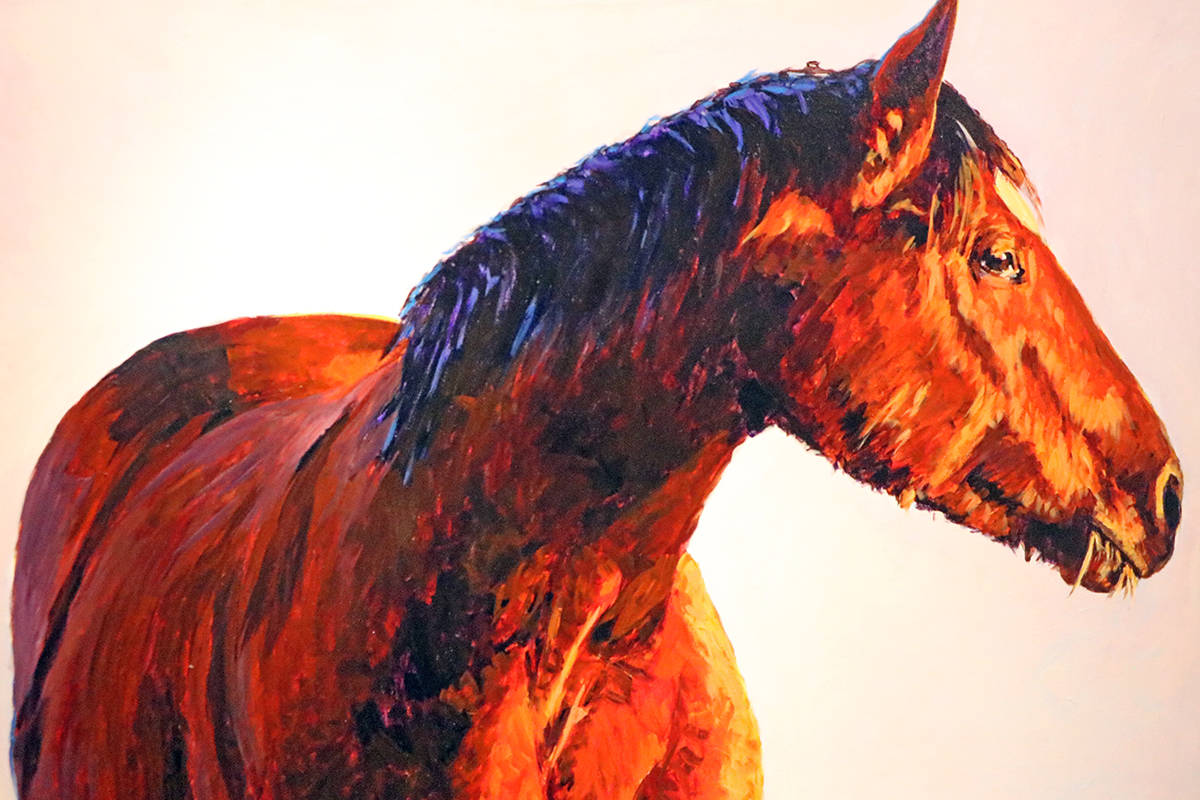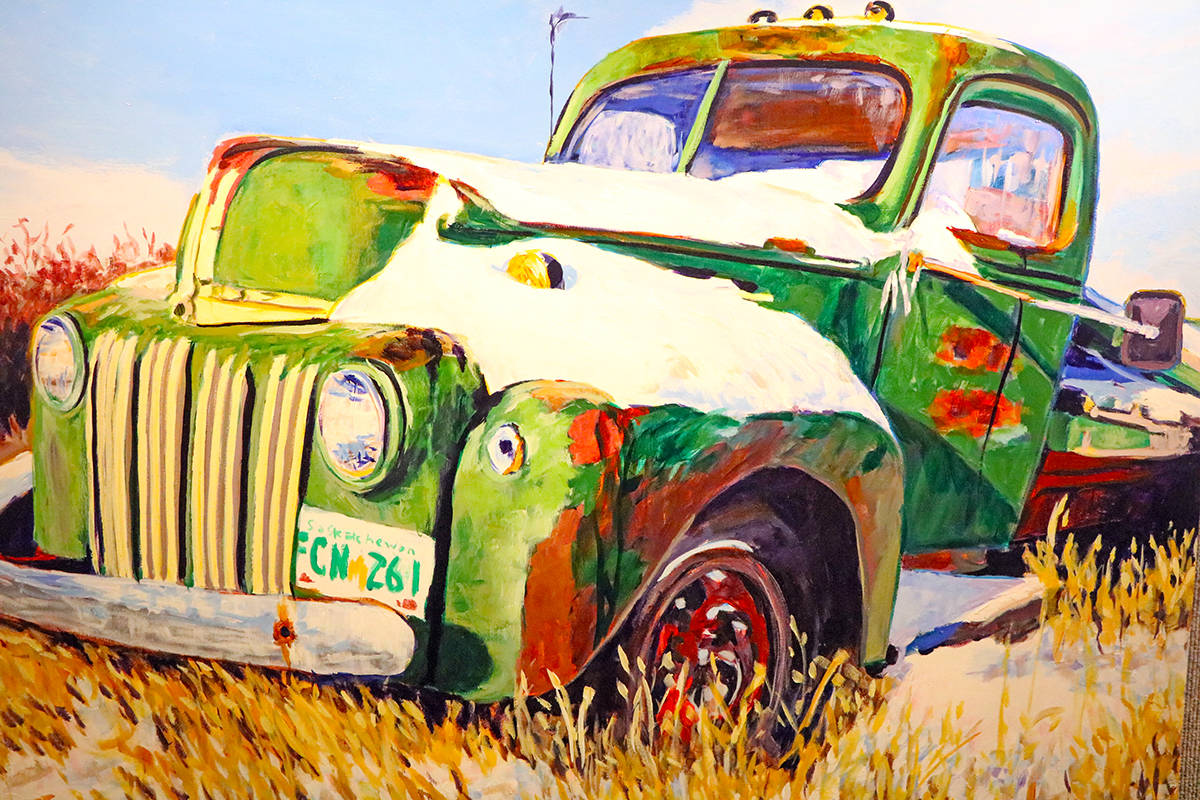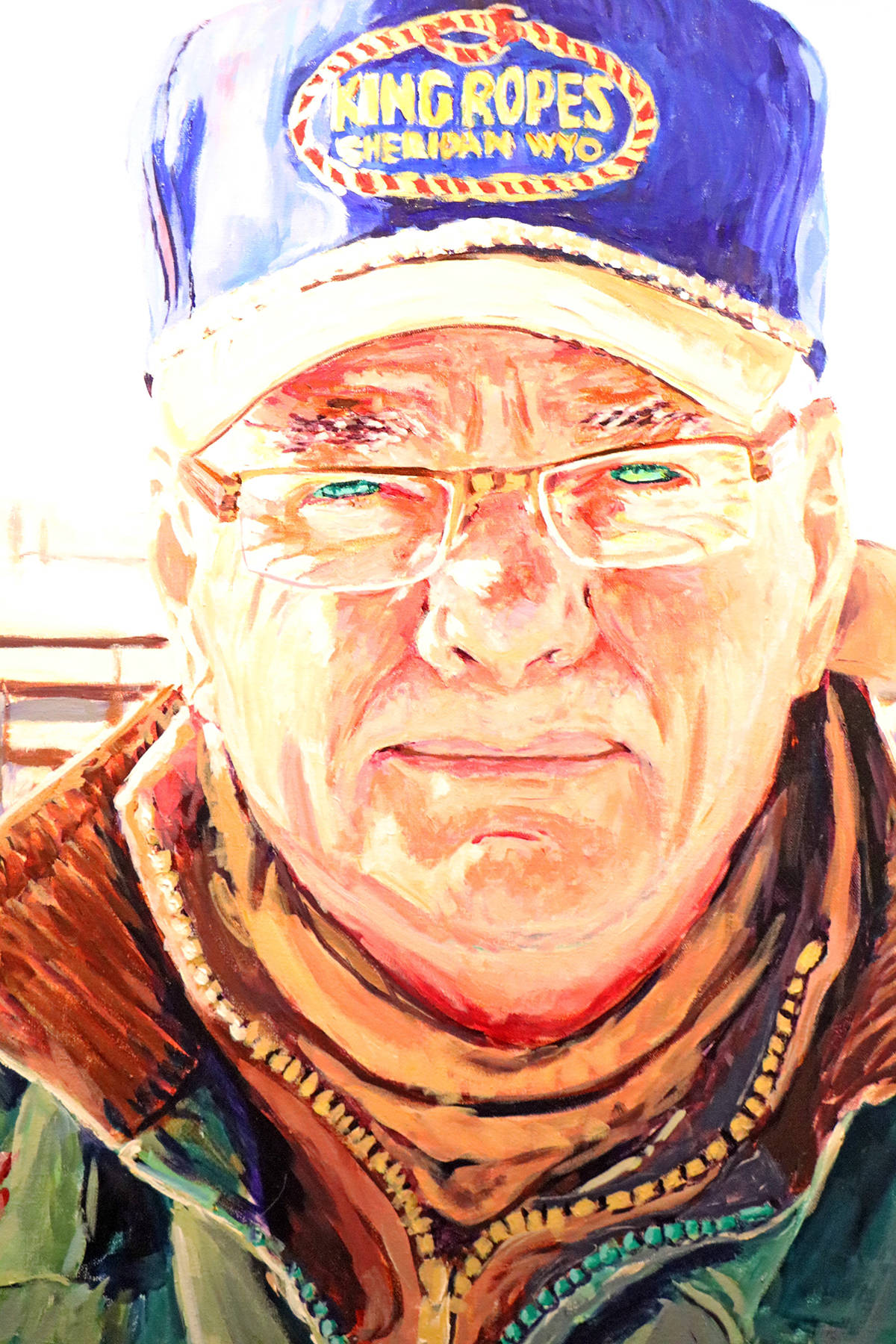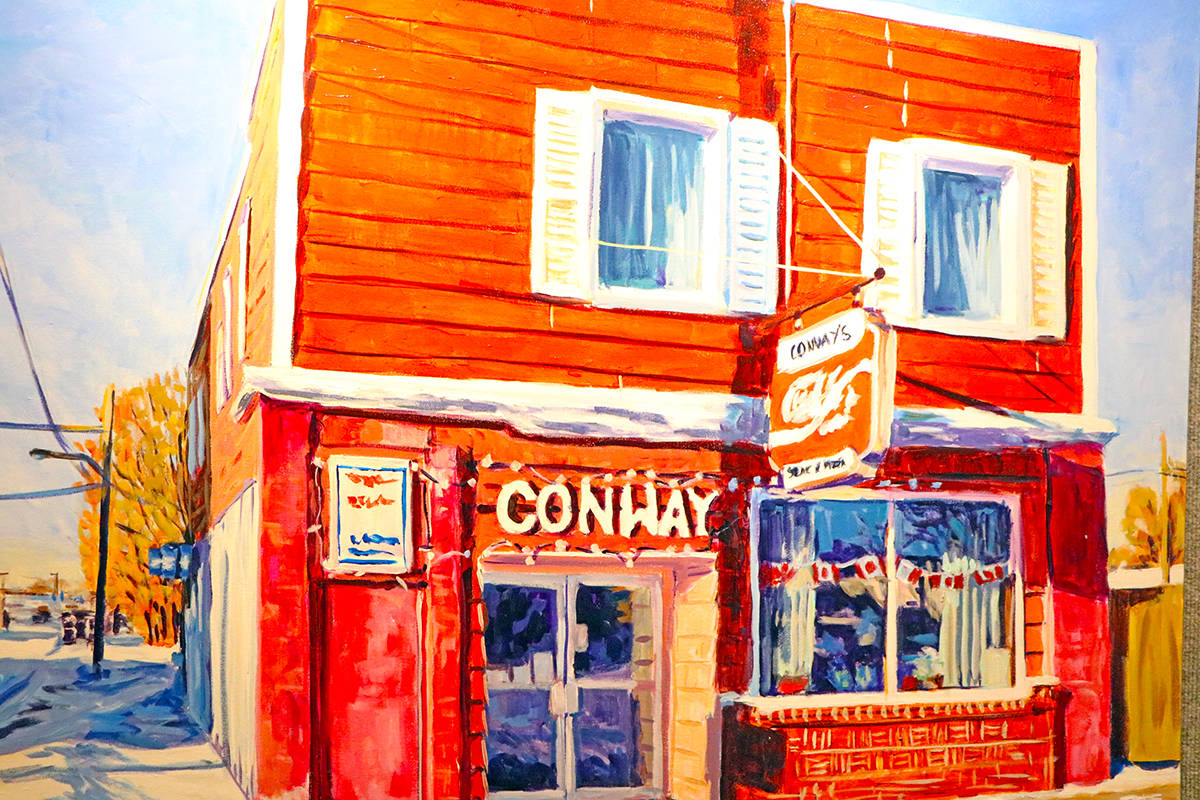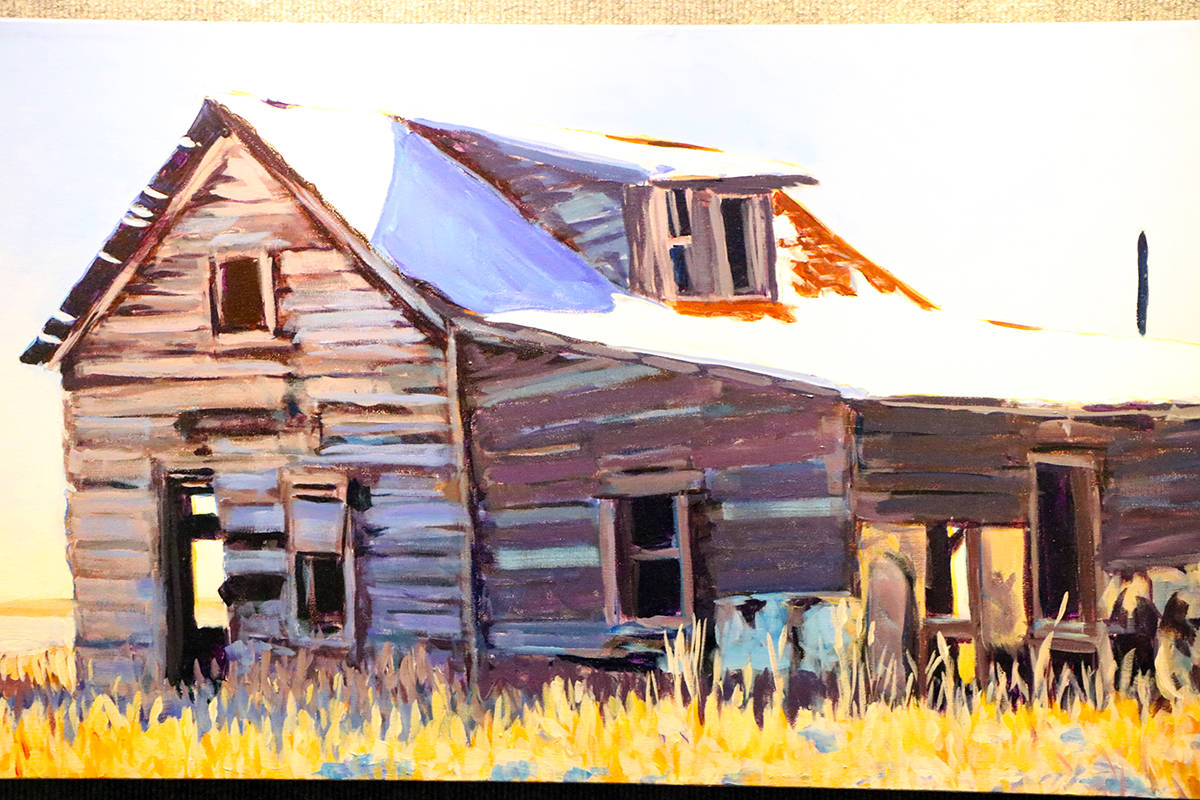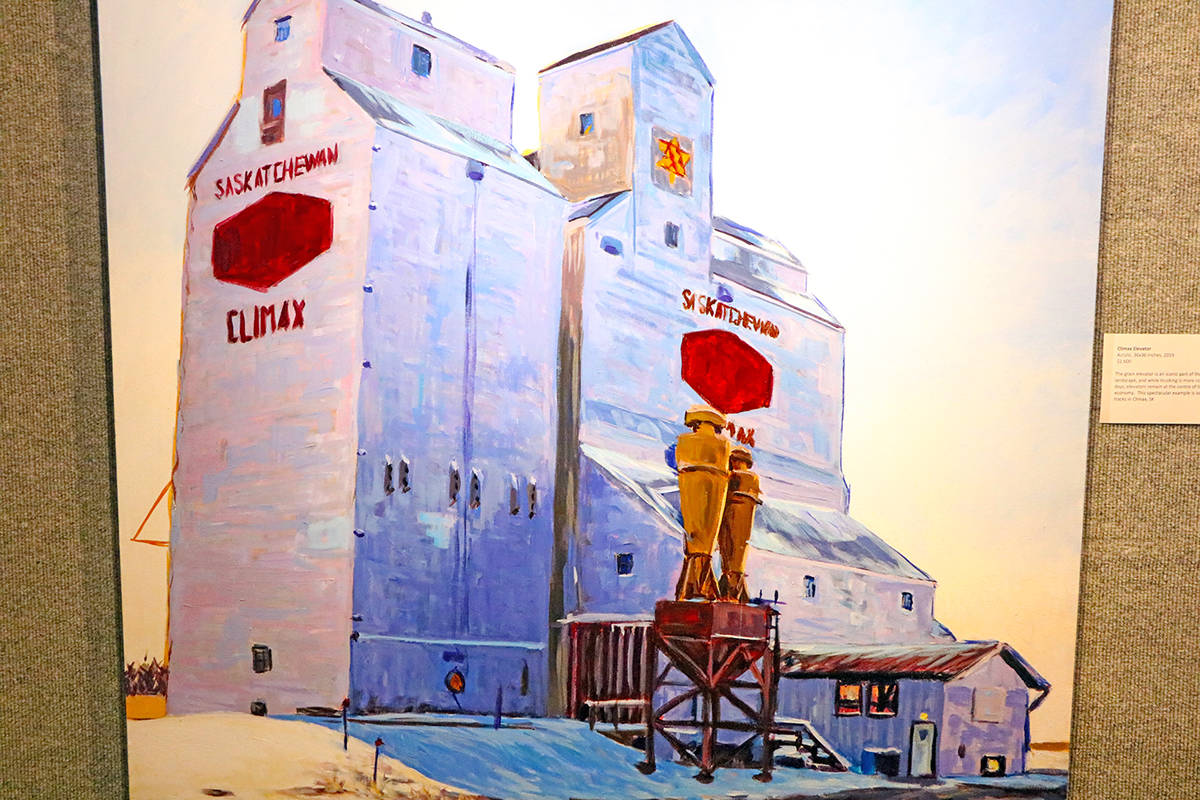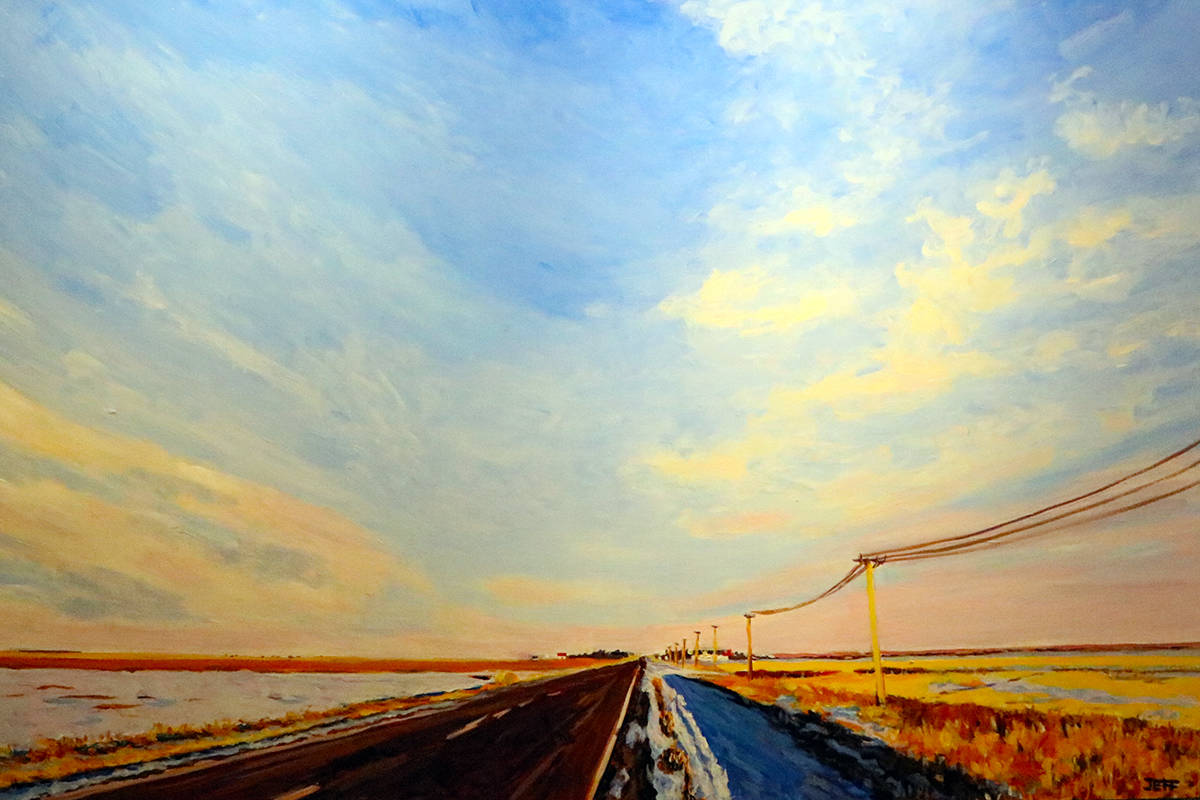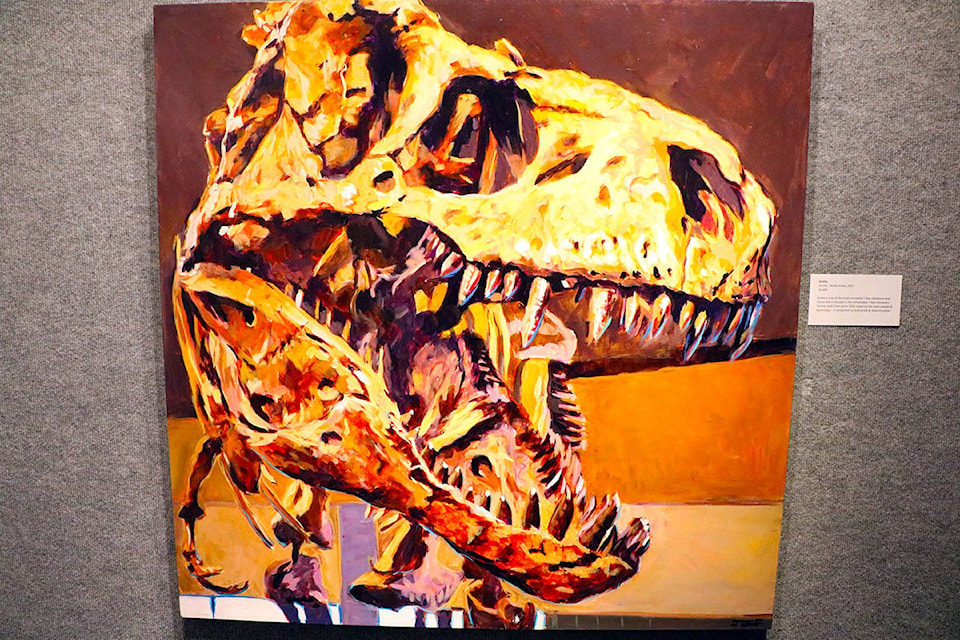In the Station House’s Lower Gallery this month art-goers are invited to take a visual journey to the heart of historical Saskatchewan with Wolf Willow.
While it may well be a province that is the butt of many jokes, from Rider Pride to being so flat you’ll still see your dog running for seven days, Saskatchewan is a part of Canada with a rich history that endures to this day. From the founding of the RCMP to American bootleggers and gangsters like Al Capone, the region has seen a lot of history yet has changed little in the modern age.
East Vancouver-based artist Jeff Wilson, originally from Edinburgh Scotland, wished to explore this region of Saskatchewan in his exhibit, Wolf Willow. Wilson came to art late in life and has been doing it professionally full time for the last five and a half years.
Trained as a geologist, Wilson has worked around the world in mineral exploration for various mining companies before coming to Vancouver in 2004 and working for local companies up until 2013.
Read More: Station House building turns 100 this year
“I got tired of seeing garbage on the wall for too much money in commercial galleries. I thought ‘I can do that,’ so my partner says ‘Stop complaining, get off your butt and do it,’” Wilson said. “So, I took a night class and just started painting on the side.”
After a downturn led to him losing his job in 2013, Wilson thought “if not now, then when?” and chose to pursue art as his full-time job. He focuses on a painterly realism style, creating a faithful but more vivid rendition of his subjects. All of his work is done in acrylic because Wilson likes how quickly it dries and then holds the “freshness” of the image.
“It’s something I can spend several hours a day on and I can forget what I’m up to. You start work and two or three hours later you finish and you wonder where the time has gone,” Wilson said.
Wolf Willow is a collection of paintings all inspired by Wilson’s time in an artists’ residence in Eastend, located in the Frenchman River Valley of South Western Saskatchewan during 2017. It’s intended to celebrate aspects of rural life in and around the valley in an isolated part of the province. The Cypress Hills keep it separate from the rest of the province and there is only one main highway into and out of the area.
The history of the area particularly interested Wilson as the area was the location of the Cypress Hills Massacre of 1873, the formation of the Northwest Mounted Police, the Hudson’s Bay Company, the arrival of the homesteaders, gangsters in Moose Jaw during prohibition to name but a few moments from its long and rich history. Due to its remote and isolated nature, he feels that the spirit of that history is still alive and visible in the area, even to this day.
Read More: Station House and CN Rail offer a mirror image of the past
Up until this exhibit, the majority of Wilson’s work has been urban landscapes, animals and vehicles based in and around Vancouver, however, he wanted to do something that wasn’t coastal but purely Prairie. The scenes he depicts in Wolf Willow are all based on moments he captured and experienced in a 60-kilometre radius around Eastend.
“With this show, I wanted to illustrate a series of snapshots of what it’s like to be there,” Wilson said. “I hope that people think it’s an authentic representation of rural Canada.”
He said he wanted to capture the changing dynamics of the land, from the decrease of homesteads as larger farms rise up to the conversion of ranching and farming land back to the native prairie to allow bison to graze their once again. Wilson hopes his show convinces people in Williams Lake to check out this incredible part of the Prairies this summer.
patrick.davies@wltribune.com
Like us on Facebook and follow us on Twitter
